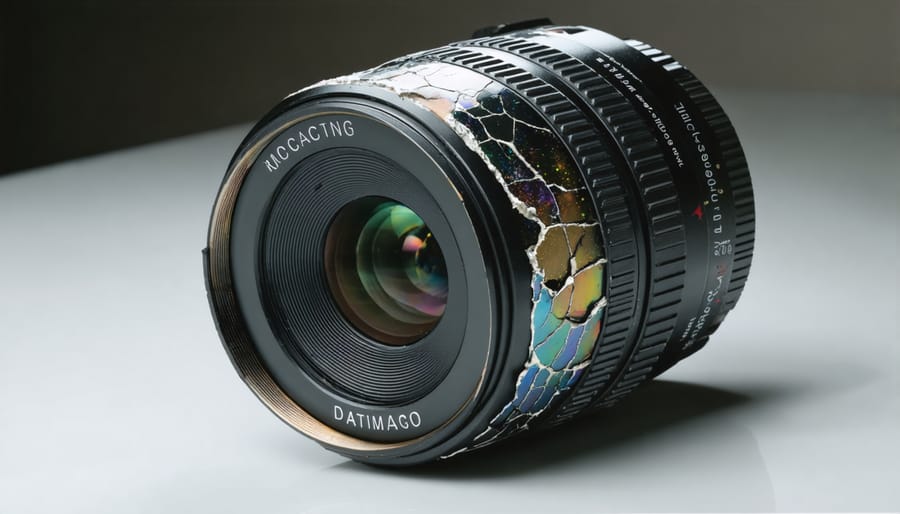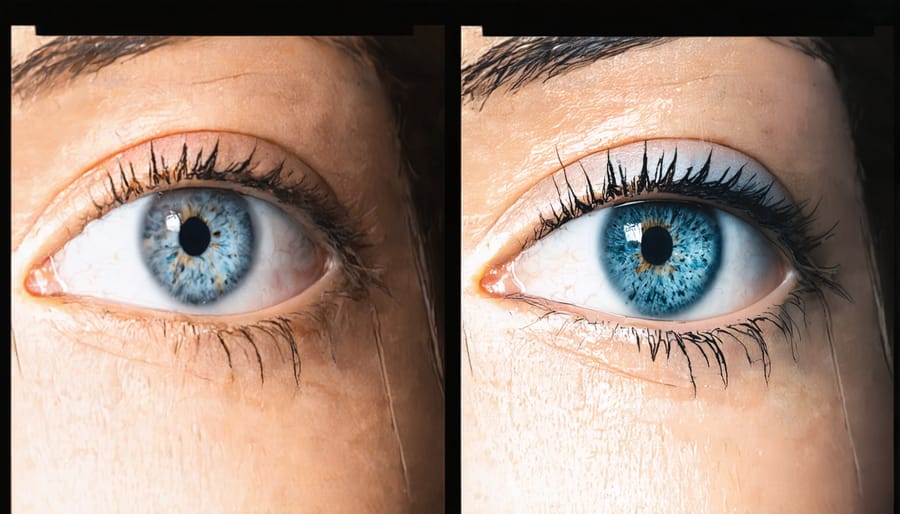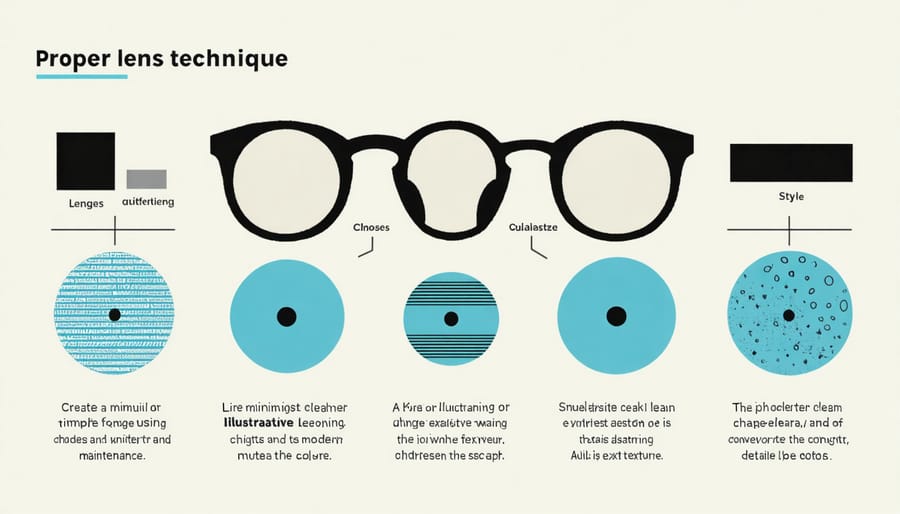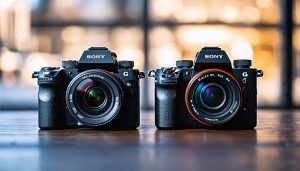
Protect your expensive camera lens investment by learning to identify coating damage before it becomes irreversible. That telltale rainbow effect or uneven discoloration on your lens surface isn’t just cosmetic – it’s a warning sign that your lens’s vital protective coating is deteriorating. While investing in quality lenses is crucial for professional-grade photography, even the finest optics remain vulnerable to environmental factors and improper handling.
Modern lens coatings serve as both guardians and enhancers, reducing flare, improving light transmission, and protecting the glass beneath. When these coatings fail, your images suffer from reduced contrast, increased ghosting, and compromised clarity. Understanding the early signs of coating damage – from subtle cloudiness to visible scratches – can mean the difference between a simple professional cleaning and needing to replace an expensive piece of equipment entirely.
Whether you’re a seasoned professional or an emerging photographer, protecting your gear’s coating integrity requires vigilance and proper maintenance techniques. Let’s explore how to identify, prevent, and address lens coating issues before they impact your creative vision.
Understanding Lens Coatings: Your First Line of Defense
Anti-Reflective Coatings
Anti-reflective (AR) coatings are thin layers of specialized materials applied to lens surfaces to reduce unwanted reflections and glare. These microscopic layers work by manipulating light waves, causing destructive interference that cancels out reflections while allowing more light to pass through the lens. The result is improved image contrast, better color fidelity, and reduced ghosting in your photographs.
Modern lenses typically feature multiple coating layers, often referred to as “multi-coating,” which can transmit up to 99.9% of light through the lens. Without these coatings, a significant portion of light would bounce off each glass surface, reducing image quality and creating unwanted artifacts in your photos.
AR coatings are particularly crucial for digital photography, where reflections can be more problematic due to highly reflective sensor surfaces. They’re also essential when shooting in challenging lighting conditions, such as photographing toward light sources or capturing night scenes with multiple light points.
While these coatings are incredibly beneficial, they’re also delicate. The thickness of AR coatings is measured in nanometers, making them susceptible to damage from improper cleaning, environmental factors, or physical contact. Understanding how to protect these vital coatings is essential for maintaining your lens’s optimal performance.
Protective and Special Purpose Coatings
Modern lenses come equipped with various specialized coatings designed to enhance performance and protect against everyday challenges. Water-repellent coatings, often marketed as “hydrophobic” treatments, cause water droplets to bead up and roll off the lens surface, making them ideal for outdoor and wildlife photography in challenging weather conditions. These coatings also help repel fingerprints and make cleaning easier.
Scratch-resistant coatings provide an additional layer of protection against minor impacts and abrasions. While no coating can make a lens completely scratch-proof, these treatments significantly reduce the risk of damage from normal handling and cleaning.
Many manufacturers also apply anti-static coatings to prevent dust attraction, and UV-protective layers to reduce harmful ultraviolet radiation. Some premium lenses feature nano-coating technology, which creates an ultra-smooth surface at the molecular level, effectively reducing flare and ghosting while improving image contrast.
These protective coatings work together as a system, and damage to any layer can compromise the overall performance of your lens. Regular gentle maintenance and proper handling help preserve these coatings, ensuring optimal image quality throughout your lens’s lifetime.
Signs Your Lens Coating Is Damaged
Visual Indicators
Identifying lens coating damage through visual inspection is often your first clue that something’s amiss with your lens. The most common indicator is a rainbow-like iridescent effect when you view the lens surface under bright light. This multicolored pattern, similar to an oil slick on water, typically suggests deterioration of the anti-reflective coating.
Another telltale sign is the appearance of cloudy or hazy patches that don’t wipe away with standard lens cleaning methods. These areas might look like smudges at first glance, but unlike fingerprints or dust, they remain persistent despite cleaning attempts. In severe cases, you might notice the coating actually flaking or peeling away, creating visible edges or patterns on the lens surface.
When examining your lens, pay special attention to the edges and corners, as coating damage often starts in these areas first. Using a flashlight at an angle can help reveal subtle coating issues that might not be visible under normal lighting conditions. Look for any inconsistencies in the surface reflection – areas where the coating is damaged will often reflect light differently than intact areas.
If you notice small scratches that appear to have a colored tinge to them, this could also indicate coating damage rather than just surface scratches on the glass itself. Remember to check both the front and rear elements of your lens, as coating damage can occur on either surface.

Impact on Your Photos
Lens coating damage can significantly degrade your photographs in several noticeable ways. When coatings are compromised, you’ll often see a reduction in contrast and color accuracy, making your images appear flat and less vibrant. This is particularly evident in high-contrast scenes, where damaged coatings struggle to maintain optimal image quality.
One of the most common issues photographers encounter is increased lens flare and ghosting. Imagine shooting a backlit portrait – instead of capturing the subject’s natural warmth, you might end up with unwanted light artifacts and reduced clarity. In landscape photography, damaged coatings can make shooting toward the sun particularly challenging, producing hazy, washed-out images with reduced detail.
Another telltale sign is reduced sharpness, especially noticeable in fine details like architectural elements or wildlife feathers. Photos taken with coating-damaged lenses often require more post-processing work to achieve the desired clarity and contrast, and sometimes, the loss of quality simply can’t be corrected in editing.
In low-light situations, damaged coatings can lead to more pronounced light scatter, resulting in reduced contrast and clarity. This is particularly problematic for night photography or indoor shoots where every bit of light control matters. Even subtle coating damage can impact your ability to capture the scene as intended, potentially compromising professional work or important shots that can’t be recreated.

Common Causes of Coating Damage
Understanding what causes lens coating damage is crucial for protecting your valuable photography equipment. Let’s explore the most common culprits that can compromise your lens’s protective layers.
Cleaning mistakes top the list of coating damage causes. Using rough materials like regular clothing, paper towels, or dirty cleaning cloths can create microscopic scratches that gradually wear down the coating. Similarly, applying excessive pressure during cleaning or using circular motions instead of straight lines can accelerate coating deterioration.
Environmental factors play a significant role too. Prolonged exposure to direct sunlight can cause coating breakdown, especially in older lenses. Salt spray near coastal areas and acidic rain in urban environments can chemically react with the coating, leading to deterioration over time. Extreme temperature changes can also cause the coating to expand and contract, potentially leading to separation from the glass surface.
Physical impact, even minor bumps, can affect coating integrity. While modern coatings are relatively durable, repeated small impacts or a single significant shock can cause the coating to crack or peel. This is particularly common around the edges of the lens where the coating might be slightly thinner.
Chemical exposure represents another significant threat. Using inappropriate cleaning solutions, especially those containing alcohol or ammonia, can dissolve or damage the coating. Even the oils from your fingerprints can gradually erode coating if left untreated.
Storage conditions matter too. Keeping lenses in humid environments without proper protection can lead to fungal growth that eats away at the coating. Similarly, storing lenses without caps or in dusty conditions increases the likelihood of scratches and abrasion damage.
Aging is an inevitable factor, as all lens coatings have a limited lifespan. However, this natural deterioration process accelerates when combined with any of the above factors, making proper care and maintenance essential for extending your lens’s useful life.
Preventing Coating Damage
Preventing coating damage is much easier and more cost-effective than dealing with repairs later. Start by always keeping your lens caps on when the equipment isn’t in use. To effectively protect your lens, invest in quality front and rear caps that fit securely.
Develop a regular cleaning routine using proper techniques and essential lens care supplies. Always start with a blower to remove loose particles, followed by gentle brushing with a lens brush. When using cleaning solutions, apply them to a microfiber cloth first, never directly to the lens surface.
Store your equipment in a climate-controlled environment, away from extreme temperatures and humidity. Moisture can deteriorate coatings over time, so consider using silica gel packets in your camera bag. When shooting in harsh conditions like rain or sea spray, use weather-sealed equipment or protective covers.
Be mindful of physical contact with the lens surface. Avoid touching the glass with your fingers, and never use rough materials like clothing or paper towels for cleaning. When changing lenses, do so quickly and in protected environments to minimize exposure to dust and debris.
Remember that prevention extends to careful handling during shoots. Keep lens hoods attached when possible, and always use lens filters in challenging environments. By incorporating these protective measures into your routine, you’ll significantly extend the life of your lens coatings and maintain optimal image quality.

What to Do When Coating Damage Occurs
When you discover coating damage on your lens, don’t panic – there are several options available depending on the severity of the damage. For minor scratches or wear, you might be able to continue using the lens without significant impact on image quality, especially if the damage is on the edge rather than the center of the lens.
If the coating damage is affecting your images, the first step is to get a professional assessment from a reputable camera repair service. They can evaluate whether the damage requires intervention and recommend the most cost-effective solution. Sometimes, what appears to be severe damage might have minimal impact on actual photography.
For extensive coating damage, you generally have three main options:
1. Professional recoating: Some specialized services can remove the old coating and apply a new one. While expensive, this can restore the lens to near-original condition.
2. Lens element replacement: If the damage is severe, replacing the affected lens element might be necessary. This option is typically available only for high-end lenses from major manufacturers.
3. Living with the damage: If the impact on image quality is minimal, you might choose to continue using the lens as-is, perhaps employing post-processing techniques to address any minor issues in your photos.
Before making a decision, consider the lens’s value, replacement cost, and its importance to your photography. For an expensive professional lens, repair might be worth the investment. For a budget lens, replacement might be more cost-effective. In either case, once you’ve addressed the current damage, implement proper lens care practices to prevent future coating issues.
Protecting your lens coatings is crucial for maintaining optimal image quality and preserving your valuable photography equipment. Remember that prevention is always better than cure – storing your lenses properly, using protective filters, and handling equipment with care can save you from costly repairs or replacements.
Regular maintenance, including gentle cleaning with appropriate materials and techniques, should become part of your photography routine. Be particularly vigilant in challenging environments, such as beaches or dusty locations, where coating damage is more likely to occur.
If you do notice signs of coating damage, don’t panic. Assess the severity of the issue and how it affects your images. Minor scratches or wear might be manageable, while more serious damage should be evaluated by a professional repair service. Consider the age and value of your lens when deciding whether to repair or replace it.
Most importantly, treat your lenses as the precision instruments they are. With proper care and attention, your lens coatings can continue to serve their purpose effectively, helping you capture the stunning images you envision for years to come.























